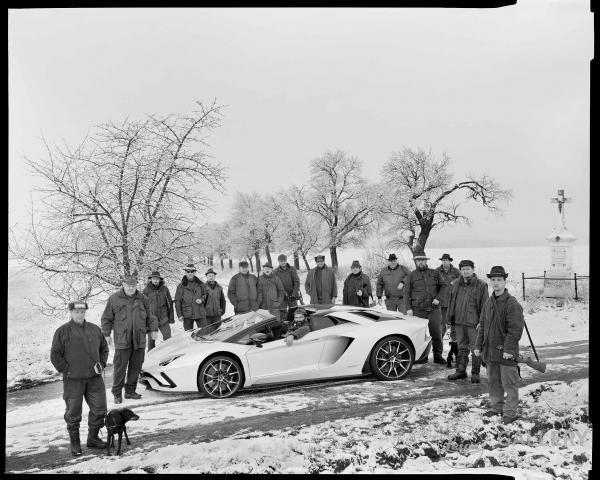
The attendees of the world championship in skipping rocks at Hebridy, sidewalk sweepers in Brno, Madeleine Albright, Joan Baez, and other guests of the celebration in the American congress, firefighters from Naloucany with priest during the blessing of the new firefighter car, regulars in a bar in Memphis, huntersfrom three villages with a Lamborgini car, football fans in Vanuatu in the South Pacific…
These are some of the types of people that Roman Franc depicts in his new cycle of photographs titled Groups with an incredible sense for light intelligent humor, exaggeration, and with great appreciation for human values and togetherness.
Franc follows up on his previous work, in which portrait, documentary, and staged photography are mingled. More specifically on the extensive cycle in “Sokol movement members”: faithful guard as well as the cycle of absurdly arranged scenes called “My little miracles”. Several humorously staged group photographs were also created within this framework. Franc doesn’t deny his inspiration for many older artworks ranging from amateur images of family gatherings or old photographs of thousands of American soldiers arranged into a variety of signs and images to group portraits from Richard Avedon or Annie Leibovitz. The biggest inspiration, however, was the work of the American photographer Neal Slavin, who stages people in front of a large format camera to various humorous situations within his colorful group portraits. Franc established personal contact with Slavin since he is participating in the creation of a film about Slavin and is trying to organize his exhibition in the Czech Republic.
Roman Franc considers his first image in the cycle Groups to be the portrait of hundreds of attendees of the memorial March of Reconciliation walking from Pohořelice to Brno in May 2015 although some older works could also be included in this collection. The group portrait appeared at the center of Franc’s interest. The author not only intensively increases the number of his photographs with this theme, but also but he is also writing a dissertation on the development of the group portrait as part of his doctoral studies at the Institute of Creative Photography of the University of Silesia in Opava. Along with his friend and classmate Gabriel Fragner, he founded a two-member group FRA FRA in 2020, within which they are working on a joint project. It is titled Friday Evening at the Camp and they also created some group portraits together. The vast majority of portraits of various groups, however, Roman Franc creates alone.
Those would not exist unless the author would not have gained the trust of those being photographed, who willingly cooperated during posing according to his instructions. Sometimes, he has the concept of the images thought through to every last detail, other times, he spontaneously reacts to the surroundings, lighting, or the mood of the people in front of the camera. However, he always takes on the role of the director, who authoritatively yet amicably lets all those involved know, that they all play a crucial role in both artistically and historically important photographs. The subjects then have the feeling, that they are a part of something exceptional, of something that builds on the past and that will last for the future. He can persuade football players and their fans from the islands of Tanna, enjoyers of sauna and nudists near the river Svratka or dozens of seniors who used to work in an armory in Brno to cooperate. Its role in this plays not only the respect for a slow and heavy, but dignified large format film camera, so special in the age of phones and light compact cameras. Inventive image composition and technical precision both play a crucial role in his works.
Roman Franc often returns to taking photos of certain groups such as firefighters, hunters, or the citizens of the village of Naloučany. The citizens, later on, took him as one of their own and out of gratitude for the fact, that their portraits made their way into the library of the American Congress, named him a member of the firefighters and organized a ball in their village in his honor. Hence, not only great photographs are being created, but often even friendships.
Vladimír Birgus, curator of the exhibition
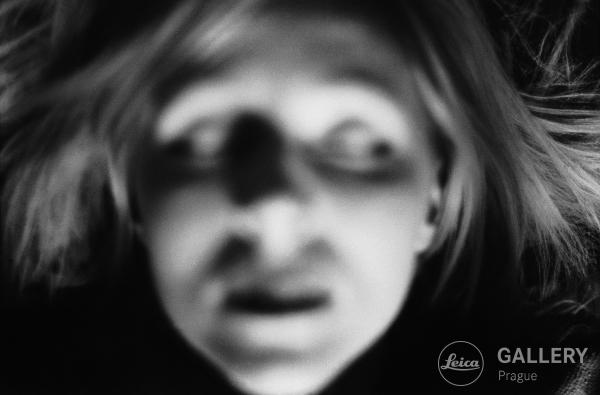
Milota Havránkova Foundation builds on the body of work of the renowned Slovak photographer Milota Havránková, who consistently and convincingly demonstrates her own uncompromising attitude to one’s inner artistic freedom through this medium.
The foundation supports artistic creation and curatorial and exhibition activities of the youngest generations and thus contributes to the understanding of this medium as a complex, dynamically evolving visual language communicating the fundamental questions of our being.
Milota Havrankova
Milota Havrankova (b. 1945) belongs to the first generation of professional photographers with a university education in Czechoslovakia who in the late 1960s graduated in art photography from the Film and TV School of the Academy of Performing Arts in Prague (FAMU). Her work is characterised by a variety of technological and thought processes and a wide range of art disciplines, from design, through monumental and staged photography, to experimental film. Havránková entered the art scene in the late 1960s, when a young generation of photographers emerged (photographic „new wave“) who were not frightened to display a strong disrespect to the prevailing genres or formal traditions, or socially or politically engaged topics. Having crystallized outside the main photographic trends, her working method systematically demonstrates the fascination with a staged image and experimenting with incoherent and unconventional techniques. The artist´s timeless attitude to the issue of inner artistic freedom, even in the context of technological progress, is particularly inspiring. Havránková keeps transcending the boundaries of photography, film and video, anticipating the need to address the increasingly media-literate audience through several parallel languages. All these creative approaches can also be visible in her pedagogical works. In 2006 she was awarded the title of Professor of creative art, and for more than four decades, she has worked as a teacher at the best Czech and Slovak art schools, such as( the Secondary School of Applied Arts in Bratislava, Academy of Fine Arts in Bratislava, Film and TV School of the Academy of Performing Arts in Prague, Academy of Arts in Banská Bystrica, and Art and Design Institute in Prague, where she considerably contributed to shaping key aspects of a parallel perception of photography and contemporary visual art. With the creative approach, she initiated the formation of the “Slovak New Wave” which was a group of young photographers who have influenced the postmodern line of Czechoslovak photography from the 1980s to the present. Havránková received several awards, such as the Crystal Wing Award in the category of fine art (2007), SEDF Professional Photographers Award – Personality of the Year (2014), or Tatra banka Foundation Art Award (2016).
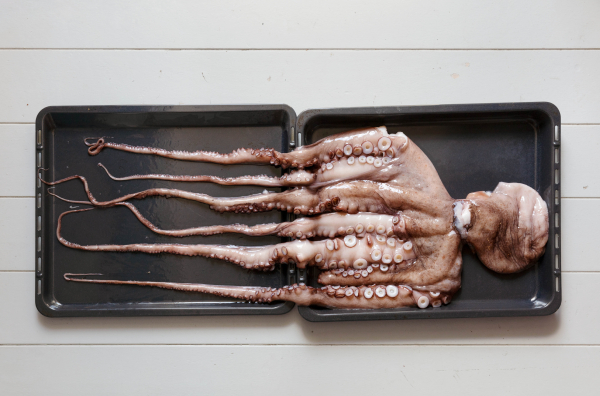
The exhibition ‘Quicksands‘ is the second exhibition project of the Milota Havránková Foundation. The selected artists represent the generationaly wider line of a specific creative approach to photography. The theme of the exhibited project, which was worked on by the artists, was the of coming to terms with pain or hurtful personal experience that significantly altered their previous perception of themselves as well as of the world surrounding them.
Anna Vartecká, curator
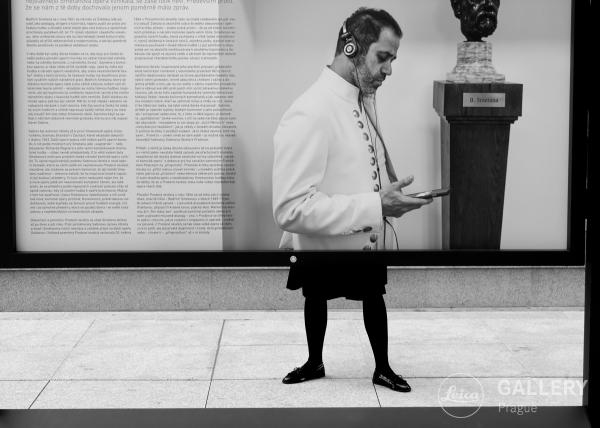
The purpose of the Art Photo-Group “StreetPhoto is not just a Click in the Street”
is to find truer and higher form of street photography and to find new inspiration…
The Group is meant for all photographers who wish to creatively develop their art. The Group’s goal is to give its members space to debate about and publish their street photographs which did not come about through just a click in the street.
Curator: Veronika Mašková
We happily invite you to the exhibition featuring the lesser known work of one of the pioneers of humanitarian documentary photography in the former Czechoslovakia. The snapshots by Gustav Aulehla from the 50.-80s in the 20th century capture the images of lives of streets and cities, moments filled with movement and dynamic, but also waiting and rest, moments of birth, growth, maturing as well as the death of both people and objects. Due to his inspiration from the work of Henry Cartier-Bresson, Aulehla was the predecessor and founder of the street photography genre within our country.
The exhibition showcases a representative selection of the relatively broad as well as the lesser known work of one of the pioneers of humanitarian photography in the former Czechoslovakia. The snapshots by Gustav Aulehla from the 50.-80s in the 20th century capture the images of the lives of streets and cities, moments filled with movement and dynamics, but also waiting and rest, moments of birth, growth, maturing as well as the death of both people and objects. The broad work of the author, that could be compared to his personal photography diary consisting of roughly 80 thousand photographs, is a unique set capturing the second half of the 20th century in Czechoslovakia. That is without the everpresent self-censorship, tendentious or propaganda influenced point of view of an ordinary individual living in a peaceful, but also unfree and occupied after 1968 socialism.
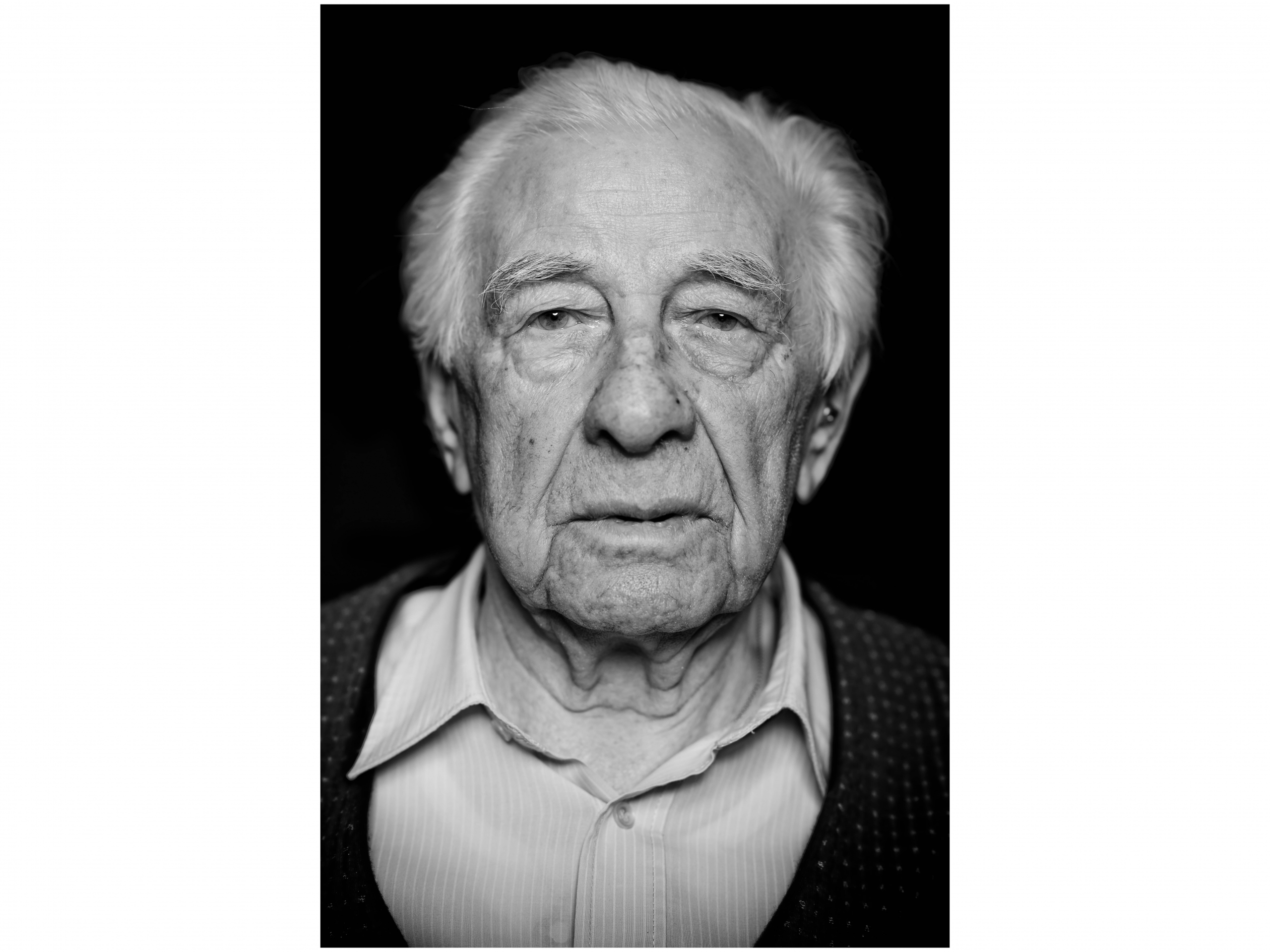
through the whole world and managed to meet countless well-known personalities. He also operates in Hollywood, where he became a significant portrait photographer of actors. In the Leica Gallery Prague café, we present you with a diametrically differing series of his photographs, then with which Baumann is usually associated with and for which he receives praise. Currently, you have the opportunity to get introduced with the other, unfairly less known side of Baumann’s work. Photo series Life is a compilation of snapshots lacking any sort of arranging, that share the life stories of those featured on said photos. This serves as a reaction to the modern age, where we are constantly bombarded with ‘beauty ideals’, which are almost impossible to achieve naturally for the majority of people. Whoever wants to upkeep with the current trends needs to get something modified, input silicon under their skin and hide their natural appearance under a layer of make-up. All of these procedures are supposed to contribute to our everlasting youth and hide the reality. However, Manfred Baumann is taking a different approach to this photographic cycle. He captures the harsh face of reality with wrinkles, without adjustment, in which are engraved the life stories and destinies of people, who have walked this world for almost 100 years. Manfred and Nelly Baumann toured retirement homes and began collecting the stories of those people. Thanks to the interviews, Nelly Baumann managed to gather a compilation of life stories, which add to the exhibition while also strengthening it.
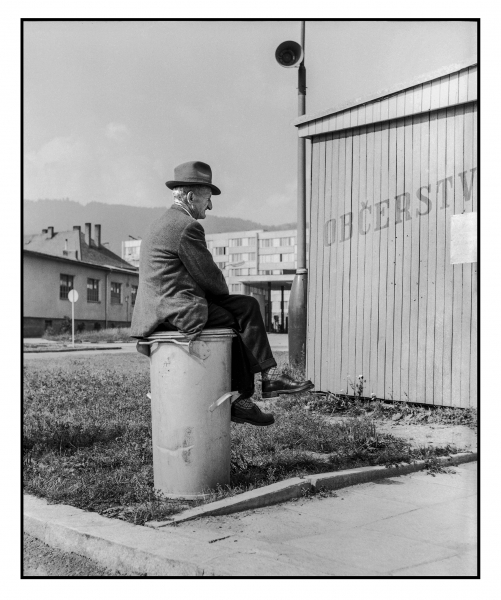
Jaroslav Kucera (*1946) would be hard pressed to find a more fitting name for his photography collection capturing the two decades of repressive normalisation between the Soviet occupation of Czechoslovakia in August 1968 and the Velvet revolution in November 1989.
In truth, on the surface life seemed to be calm. But a strange one, filled with tension. The calm seethed beneath its surface. Seethed with repressed emotions, mass frustration, schizophrenia of a dual existence, internal migration, and the irrepressible need for a sense kinship, even conspiracy… It was a state of “tragic conflict between external and internal reality, whose torment is experienced by the people of today”, to use the words of Czech interwar avant-garde artist Karel Tiege. Kucera immortalised the seemingly uncapturable contemporary conflict between external and internal reality, portraiting that strange calm. How? Through his extraordinary compassion and sensitivity toward a time he was a part of.
Jaroslav Kucera was 22 when he, a student at the Faculty of Civil Engineering at the Czech Technical University in Prague, was traumatised by August 1968 and the feeling of hot rage, disappointment, and powerlessness. That was the moment he decided to turn his previously amateur photography into a calling and a profession once he graduates. He began perceiving photography as an important tool for witness testimony and personal account, and with his characteristic zeal began capturing the unprecedented national cohesion, breath-taking solidarity, and spontaneous pushback against the rising new but familiar power. He was arrested, beaten, and kept in custody for several weeks. Kucera understood that the social documentary he was envisioning had no chance of materialisation in the time’s climate, and resorted to images whose testimony is indirect, round-about and focused exactly where the public’s attention quickly turned: behind the frame of the image.
And so his photographic cycles began emerging from student halls, city streets, deserted walkways, from the environment of buffets, pubs, casinos but also from the countryside, dedicated to the “people I have met”. Kucera’s deep empathy enabled him to act as a sensitive psychosocial probe. A probe with Kucera’s unique sense for humour, absurdity, and irony, particularly in the cycles Melnice winery and Communist festivities, where he brought together a touching display of human kinship and a contagious dark humour.
With his early work “Calm before the storm” Jaroslav Kucera places himself as the foremost representative of contemporary Czech photodocumentary.
Daniela Mrazkova, curator
The exhibition presents a set of photographs from the “Spartakiad” cycle, which has already become legendary since they were made, not just in our country but also in the world. Not just because the photographer was awarded by the World Press Photo. During the soldiers’ performance, it began to rain and their bodies, smeared with mud, were transformed into absurd statues.
Are these nearly two dozen images produced over the course of a few short minutes a celebration of sport and heroic performance? Or are they a memento, an interception of a marginal situation, a manipulated social bodies?
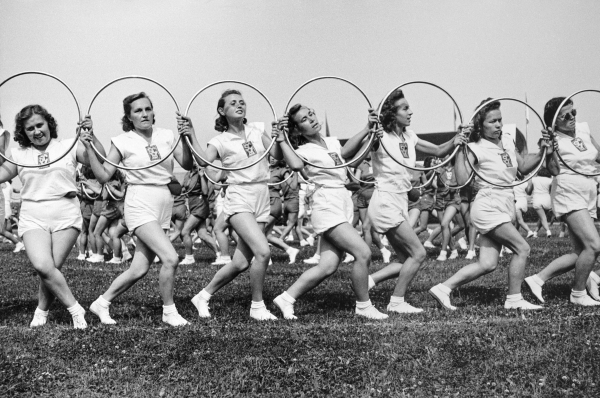
For what would have been the 100th birthday of the Czech photo-reporter Emil Fafek (1922-1997), the curator Dana Kyndrova collated a retrospective exhibition titled On guard, which the author considered to be his professional motto. Emil Fafek contributed to the magazine Mlada fronta for over forty years and became the pictorial chronicler of our country’s post-war development. His greatest passion was sports photography. In 1964 he won third place in the World Press Photo competition in the category Sport.
The photographer Emil Fafek (1922-1997) was born in Kuri u Rican and lost his father at the age of 14. He was a gifted student, but the pursuit of grammar school was not in the cards, since his mother wouldn’t have been able to support him on a cleaner’s salary. He apprenticed as an image retoucher in a printing plant V. Neubert & sons in Smíchov. In 1942 he was deployed to Germany where he fled from in the spring of 1944 to work illegally for the company FOTO-STYLE-CHILDREN based in Prague’s Jungmann square. Emil Fafek was a passionate self-taught photographer. He photographed with his SLR camera Embirflex since he was fifteen, his first published photograph being an image of a crashed lorry Tatra on Prague’s Pilsner Street close by Fafek’s residence. It was the Prague Uprising in May 1945 that represented a key challenge for Fafek, and that started his photojournalistic career. Unfortunately, many of the images were lost when he was stopped in Celetna street by uprising guards as the Old Town square burned, with the guards demanding Fafek expose and destroy his negatives. Despite this, two of his photographs appeared in the first issue of the newly formed magazine Mlada fronta that was first published on May 9th, 1945. Then 23-year-old Fafek accepted the offer to become an in-house photojournalist for Mlada fronta, a magazine he remained faithful to for over forty years.
Throughout his time with Mlada fronta Fafek – referred to as Fafca by his colleagues – became the pictural chronicler of our country’s post-war development. Apart from the Prague Uprising, Fafek also captured the communist coup d’état in February 1948, the socialist zeal of youth constructions, heavy industry construction, rural collectivisation, world youth and student festivals, the first of which had taken place Prague in 1947 and was followed by many Spartakiads (mass gymnastics events) at Strahov. He also documented the occupation of August 1968 and the funeral of Jan Palach, although these images were only released to the public after November 1989. As a photojournalist he naturally captured not only everyday news events, but also life’s absurdities and humorous moments.
Nevertheless, Fafek’s biggest passion was sports photography. Being a sportsperson himself, before starting his work at Mlada fronta he played ping pong, handball, tennis and criss-crossed the entire country on a bicycle. Among his most known sport images are photographs of the athlete Emil Zatopek that mapped not only Zatopek’s sports career, but also his personal life. Fafek was even denoted as the chronicler of Zatopek’s life and career in the book “Emil Zatopek and sport through the viewfinder of Emil Fafek and others” (2001).
His biggest professional achievement was a third place in the competition World Press Photo 1964 in the category Sport for Fafek’s image Schroif’s specialty which captured Slovan Bratislava’s goalkeeper’s unusual tackle. Other than athletics and football Fafek also photographed hockey, basketball, horse racing, table tennis, figure skating, rugby, gymnastics, and tennis. Alongside with his editorial colleague Emil Pardubicky, Fafek became a leading figure of Czechoslovak post-war sports photography.
In 1985, Mlada fronta published his monograph “Emil Fafek / 40 years as a photojournalist”, which he prepared together with his editorial colleague Ondrej Neff. The foreword describes Fafek’s difficult beginnings in life and photography and emphasises the vital importance of a photojournalist being “on guard”. Fafek doesn’t only refer to the readiness to capture an interesting story’s climax; every image must contain something beyond mere watchfulness which can be noticed only by a person attuned to life’s emotionally inconspicuous yet significant moments.
Emil Fafek’s photographic legacy shows that he remained “on guard” throughout his long professional life, with several of his images now firmly embedded in the history of Czechoslovak photojournalism.
Dana Kyndrova, curator
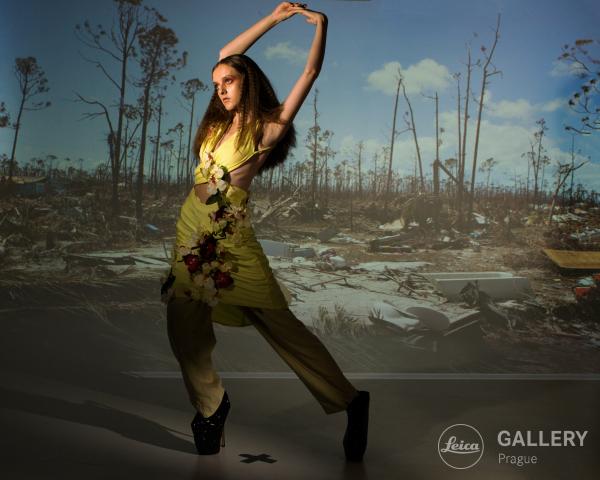
Maryna Veklynets – Hahlushka
ENG
Maryna Veklynets is a young photographer living and working in Prague. She came to Prague from a small town in Zakarpattia Ukraine in order to devote herself fully to her creative work. In her photography, she deals with current topics of modern times that affect both young people and society as a whole. She uses fashion studio photography to tell stories that reflect the issues of today, such as the environmental crisis, the hypocrisy of big fashion brands and the increasing need of people to escape into cyberspace. Even though she deals with difficult topics, through her photographs we absorb a strong story and surrealistic composition.
Instagram: @hahlushka
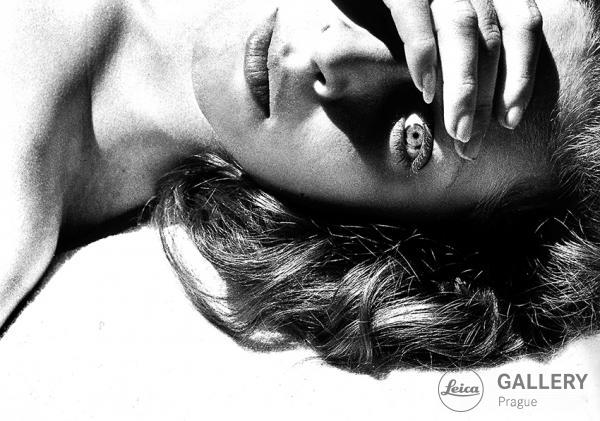
„The easiest thing to do in the world is to be a photographer. You just have to push the button. The hardest thing as a photographer is to make an image which you can look at for a long time.”
The liaison between Ralph Gibson (*1939) and Leica has thrived for six decades, having begun with the purchase of his first Leica, an M2, at the beginning of his career. He had to laboriously pay off the camera in instalments, as his work was still far from lucrative; but that camera certainly played a decisive role in helping him realize his own photographic vision. Gibson acquired his first solid foundation in photography while serving in the US Navy, followed by studies at the San Francisco Art Institute. He then assisted Dorothea Lange from 1961 to 1962, and Robert Frank from 1967 to 1968. Gibson’s style was strongly defined, from the very beginning, by graphic compositions with distinct black and white contrasts. Gibson quickly gave up the idea of working as a photojournalist. After moving from Los Angeles to New York in 1966, he worked at the Magnum Photos Agency for a trial period of a few months, but soon recognised that, “doing commercial assignments was not to be my destiny”. On the contrary, he was searching for self-determined content and his own, autonomous visual language. As he clarifies, “My work changed. No longer documentary or concerned with the human condition, it became more surreal, and this led to my first book: The Somnambulist.” The self-published photo book, which appeared in 1970, was a breakthrough; not only from the financial perspective but, more importantly, for the acknowledgement Gibson gained as a photographer and publisher. He continued to develop his imagery over the following years. His motifs, published by Lustrum Press in numerous photo books, were soon to become style-defining and serve as inspiration to many photographers. His work represented a perfect example of the transformation of American photography in the seventies, as it headed in a more individualistic, and less photo-journalistic or documentary direction, resulting in the growing acknowledgement of photography as an artistic medium. Gibson remained faithful to analogue photo technology for a long time, but when he tried a Leica Monochrom in 2013, his attitude changed: “I have not loaded a roll of film since. The photographs reflect my vision. They are the same – but different,” Gibson confirms. His clear, graphic and perfectly composed images, which are frequently taken from up close, are always immediately recognisable. They appear abstract, yet never fully give up a reference to reality. In addition to precise studies of objects, surreal-like compositions, and spontaneous-looking street scenes, exquisite nude images have a not insignificant place in the photographer’s repertoire. Whether mysterious and emotional, or clearly recognisable; whether analogue or digital, black and white or, less frequently, colour: there is no doubt that, over his lifetime, Ralph Gibson has created a many-layered and exciting body of work, for which he is now being honoured with the Leica Hall of Fame Award.
Ralph Gibson was born in Los Angeles on January 16, 1939. He learned photography in the US Navy, followed by studies at the San Francisco Art Institute from 1960 to 1962. He worked as an assistant to both Dorothea Lange and Robert Frank. Gibson also made photography history with the publishing house Lustrum Press, which he founded in 1969. The company published 40 monographs, as well as numerous compendiums and important works by other photographers. Gibson is represented in the most important private and museum collections. His work has been published internationally; and he is the recipient of multiple awards, including the Leica Medal of Excellence in 1988, and the French National Order of the Legion of Honour. He lives in New York.
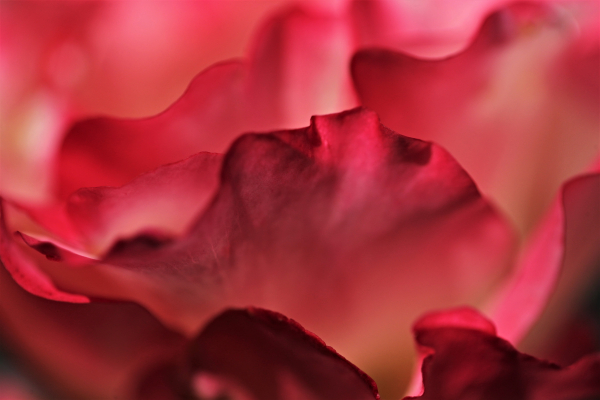
Presentation of photographs in Leica Gallery Café
Veronika Maskova is a fitness trainer, an alpinist, and last but not least a photographer. She has been drawn to photography since early childhood. She is, amongst others, interested in exteriorst; her eye for detail leads her to immerse herself in nature’s microcosm, where one can find fascinating scenes.
Her compositions are raw and aim to tap into the nature of coexistence and to capture the dialogue of “everything with everything”. The same aims are reflected in her work on urban sceneries and her goal to capture ephemeral moments of unique everydayness which remains elusive to most.
The author’s collection “Herbarium” is a tender, ephemeral and torn homage to Mother Nature, who wants touch you ……… let her.